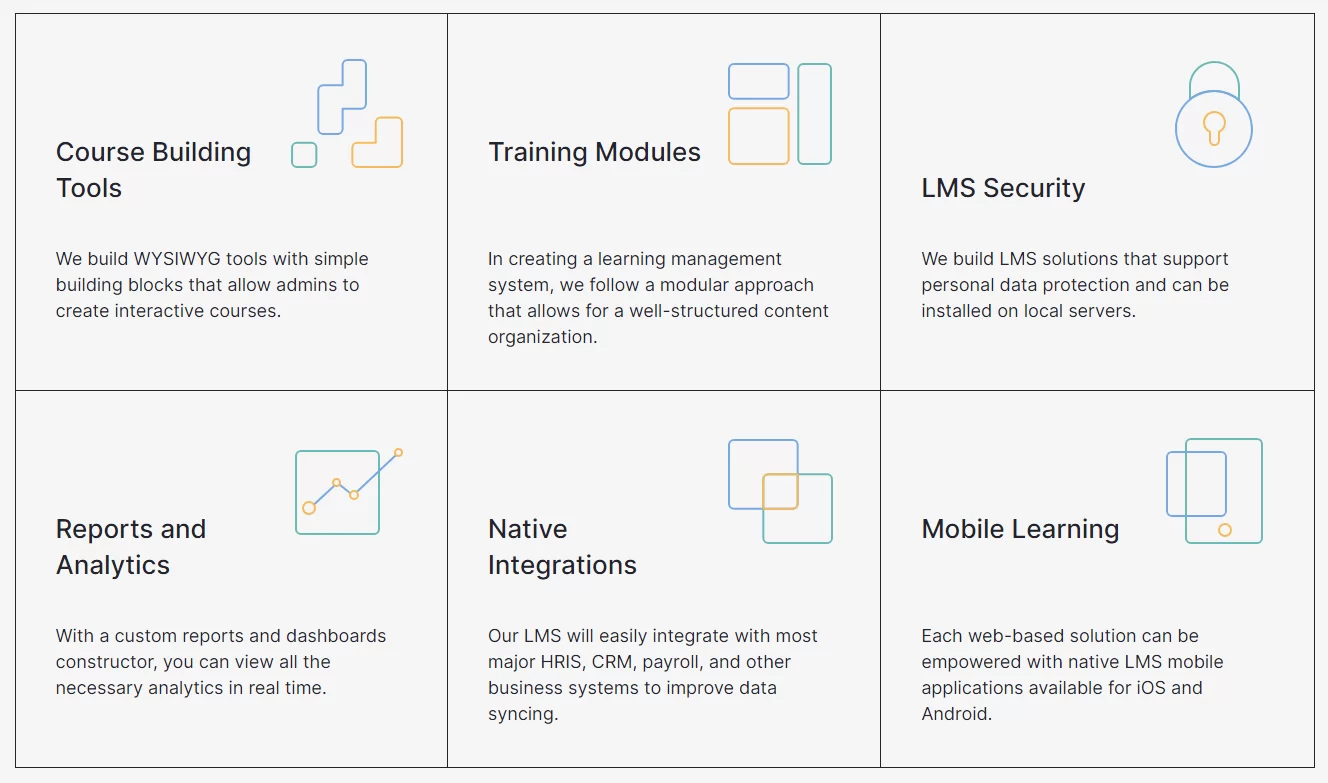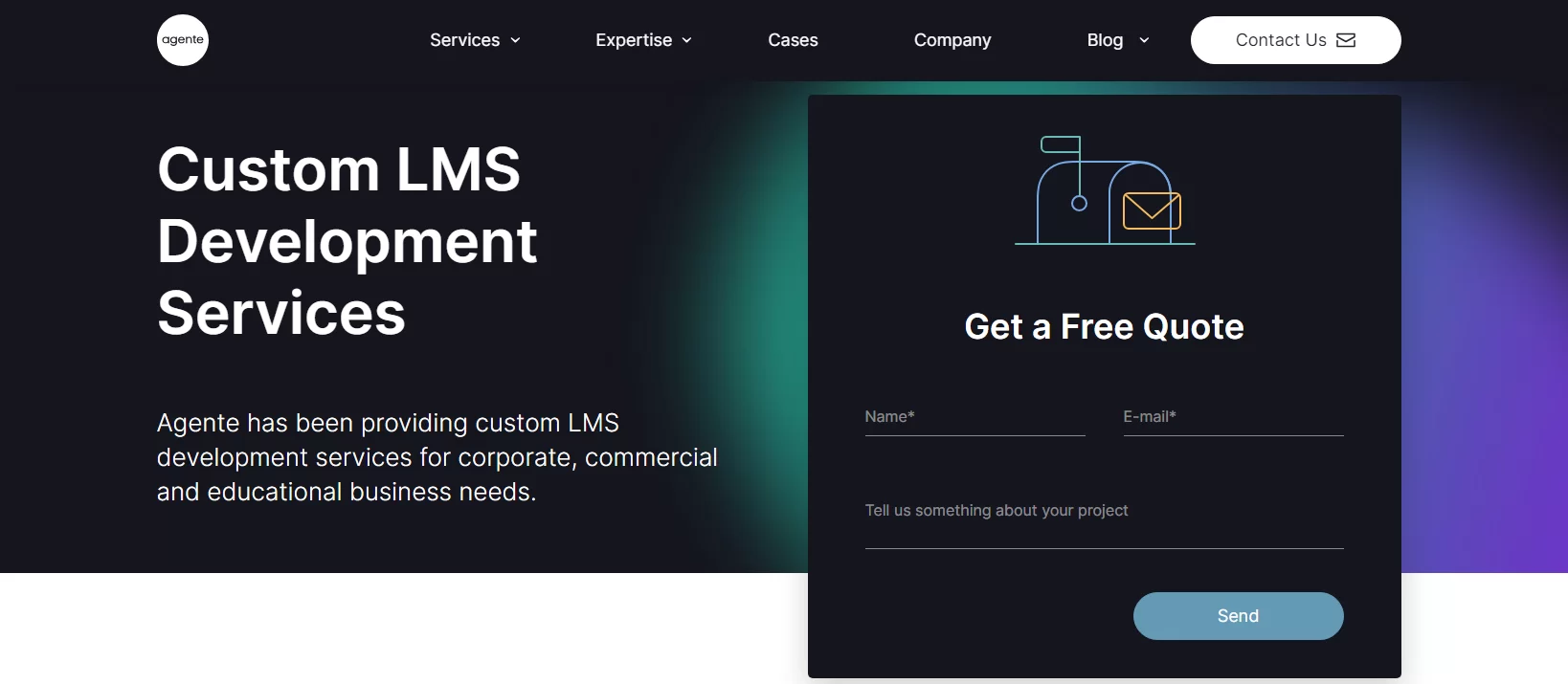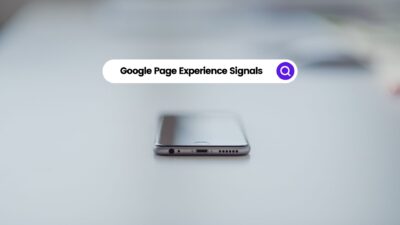A robust Comprehensive Learning Management System (LMS) like eLeaP can save you time, reduce costs, and increase flexibility. If you are still in doubt about investing in an LMS Development Company, many benefits will convince you of its true potential. However, many organizations have fallen prey to myths and assumptions about these learning management system development agencies.
As a result, they have yet to utilize the system to its full potential. But they are just myths and need to be busted. For instance, the cost incurred on a learning management system should be treated as an expense. Another myth is that LMS is only effective for delivering e-learning content. Or even that you need to buy all the modules in a learning management software application system.
Still, another myth to bust is that managing a learning management system takes time/effort and that switching to a new system is a challenge. As of today, it’s clear to say that all these myths are a bust! On that note, whether you represent a private business, a large enterprise, or an educational institution, LMS development services will significantly improve your company’s growth performance.
In the corporate environment, it’s vital to develop a custom learning management system for employee training and onboarding that provides complete flexibility and grows in your direction. Ultimately, business developers can create e-learning platforms from essential course-building and management tools to webinars, quizzes and assessments, learning games, and eCommerce features.
Getting To Know What A Learning Management System (LMS) Entails In Business
To enumerate, a Learning Management System (LMS) is a software application for the administration, documentation, tracking, reporting, automation, and delivery of educational courses, training programs, or learning and development programs. As a rule of thumb, the learning management system concept emerged directly from the general e-learning and other new material processes.
As you can see from the image above, to help your business managers with the proper selection and implementation process, eLeaP LMS developed a step-by-step plan and a checklist that indicates what an LMS must meet. In other words, a practical, user-friendly, responsive, and successful learning management system helps manage all organizational learning activities and training.
Technically, it’s often used to manage the organization’s administration, documentation, tracking, and learning to report. Consider inviting employees or gaining insight into current or completed training course reports. In addition, an LMS offers a platform for providing online, classroom, and blended training and micro-learning. It also helps to get a grip on the business learning processes.
Related Resource: How A Content Management System (CMS) Works Plus Its Ultimate Benefits
So, to better understand the function of a learning management system, the image below shows a typical learning landscape within organizations: the learning platform. The learning platform consists of a learning environment with training courses apart from management and administration. For example, eLeaP LMS is a provider that offers an accessible LMS and learning environment.
This is the part in which employees are engaged in learning and development. A portal they log in to and search, book, and follow training courses. The learning experience and the teaching offered are managed in the learning management system: the ‘management and administration system.’ Its offer is collected, and learning activities are tracked and analyzed with reports on learning efficiency.
What A Great Business Workplace Can Do With A Learning Management System (LMS)
In principle, the Learning Management System is intended for an organization’s HR and L&D departments and managers. This applies to all business organizations that want to organize learning and development well and grip training costs, budgets, and training offers. Different roles within the learning management system can be divided into administrator, manager, trainer, and employee.
All the roles mentioned above are related to user privileges on the platform. Generally, there are different types of learning management systems. However, the functionality and applications differ per system. They can be divided into three categories.
The LMS is for
- online training,
- classroom training,
- a fully integrated LMS.
As seen in the four illustrations above, these learning management systems explain all the different uses in detail. Therefore, for those looking at the specific functionalities of an LMS, a few main activities can help guide them during the learning management system implementation, such as follows:
#1: Managing your business employee information
An LMS can be integrated with almost any other HR system, so working with an up-to-date workforce is always possible. To clarify this, an LMS allows employees to be placed in teams. When new employees are added to the system, they can automatically receive an invitation to the online academy. Likewise, an LMS also helps with budgeting the purchase of training.
#2: Managing the ultimate classroom learning offer
The learning offer can also be managed with an LMS. In this way, a learning offer can easily be put together according to your wishes, whereby a combination of online, classroom, and blended training is possible. Some LMSs add microlearning in articles, instructional videos, or case studies. In addition, an LMS facilitates the creation and management of internal or external events.
#3: Managing the actual business operations budget
An essential part of training and education within organizations is the management of training budgets. Budgeting via an LMS allows setting up a personal learning account per employee or team. For your information, an approval route can be linked to perform a budget check (manually or automatically). This prevents budget overruns and provides better insight into expenditure.
#4: Directing learning activities among employees
In addition to technical support and the automation of administrative actions, an LMS can also be used within the HR interview cycle. This is by translating feedback from evaluation interviews into a learning path with appropriate training. Usually, inside the system, HR professionals or managers can create these learning paths and specific learning interventions (such as certification or assessments) and assign them to individuals or teams. The activities and developments can then be monitored, and learning results measured.
#5: Helping you to do various kinds of stuff in style
Equally important, a commendable LMS team will guide you through how to do it in detail. Using their course content creator, you can build thorough courses with chapters, lessons, prerequisites, assessments, and feedback. Then, upload them onto your learning management system. Your employee training or student coursework will be more sophisticated and streamlined than ever!
How To Choose The Topmost Best Learning Management System (LMS) For A Business
In most cases, the exact cost of your learning management system project often depends on the complexity of the project and the number of specialists you hire with us. After you fill in a brief with project requirements, the expert team can get back to you with a ballpark estimate. Notwithstanding, some learning management system companies flexibly adjust each business case’s timeline.
Remember, the concrete terms of educational software development projects can vary from several weeks to months, depending on project needs. Some work with Python, Ruby on Rails, Angular, React, React Native, and other programming languages for optimal project results. In Agente, they can even offer you their own out-of-the-box LMS solution that can be customized upon request.
If you know what an LMS is, how it works, and why you need it, you are ready to choose the best LMS for your organization. An efficient LMS will help you maximize your learning management system (get a free trial), whether premade or custom-built. Be that as it may, to get started, you can sign up and start filling your platform with premium content for your unique business.
Technically, the type of industry you are in will dictate much of the content you use to fill your learning management system. Even within your company, the intended audience will affect your present material. Conversely, any business organization’s human resources department requires a different set of skills than customer service. There are a few ways to make use of these elements.
Consider the following:
- Find the appropriate topic
- Pick a course
- Read About the Course
- Request a preview
In addition, another essential question to consider is, for example, who is included in the decision-making process. Markedly, in other words, the persons influence the chosen LMS and the types of the role they play in the selection process. A logical step is to involve HR in this, but don’t forget the part of the end-user!
Mind you, it is ultimately about the user experience of the HR manager (or administrator) and the learning employee. Once a ‘working group’ has been formed, consider what requirements a learning management system application platform must meet for your organization. Consider this: Are you looking for a SaaS or an Open Source solution? Which functionalities are essential?
Is the learning management system essential for an approval flow for open-line training, or can it also process in-company activity? Using the comprehensive eLeaP content libraries, you’ll find over 600 available courses covering various topics for beginners and professionals. Before building an LMS, let’s look into the primary learning management system types for businesses.
Including:
- Commercial
- Open-Source
- Software-as-a-Service (SaaS)
- Installed
- Integrated
- Non-Integrated
As a rule of thumb, the learning management system implementation process requires high technical expertise; an IT expert manages the integration process with other systems within your enterprise. Next, let’s discover how to build a custom learning management system. Following the step-by-step plan, you can avoid widespread mistakes and create your system from scratch.
The Steps To Implement A Learning Management System (LMS) For Business
So, you’ve decided to implement a learning management system. You’ve researched this matter and are sure it will benefit your business. And it indeed might. It might be a waste of money and get you fired. The outcome depends on the implementation process. Remember, the LMS implementation process doesn’t end at the time of the launch. Always look for ways to improve the system.
Also, consider a few other technical implementation methods to help you optimize the content, add more courses, and perfect the user experience for as long as the LMS is in operation. One thing is for sure: Remote learning has become the norm. The global digital education market reached over $300 billion in 2022, with learning management systems comprising almost half of this share.
Since 2019, there has been a rapid increase in users turning to online learning worldwide. Approximately 98% of universities have partially or fully transitioned to online classes, contributing to this trend. In other words, if you consider venturing into learning management system development, now is the perfect time. But how to build an LMS with custom functionality?
About 20% of business ideas in the US prove themselves unviable within the first year. It would be best to validate your idea to avoid unprofitable investments before creating a learning management system. As mentioned, using strategic steps, the high-end Agente Studio provides custom LMS development services for corporate, commercial, and educational businesses.
The Steps:
- Define the purpose of learning management system development. It can be customer training, employee onboarding, retention, salespeople preparation, general-purpose education, etc.
- Articulate the main problems your LMS is to solve. These may include reducing training costs, cutting employee onboarding time, freeing time, measuring learning impact, etc.
- Specify the available budget for LMS development and consider the costs involved.
- Determine the target audience for your LMS project and choose the most appropriate LMS type for them.
- Think about your LMS monetization model – whether it will be freemium or paid.
The benefit of choosing an influential LMS software developer/provider as your go-to learning management application platform is that you can create personalized content. Maybe there is a topic they have not yet covered in their library of courses. Perhaps you want to add your brand to the material. Whatever the reasons, such experts are there for you and support your creative drive!
Professional developers will help you;
- In the discovery phase of your LMS development project
- Pick your system implementation task force
- Establish a strategic implementation plan and timeline
- Prepare your business workforce for data migration
- Make an internal trial run and offer training
- Switch to the new learning management system
At all costs, a hand-picked in-house development team has substantial benefits, like complete control and direct communication. Usually, these factors are the more crucial for learning management system development, the bigger the project and the longer the development process. Yet, assembling an in-house development team takes substantial time for interviewing and training.
It is also associated with higher costs than outsourcing since employing people is a long-term investment to fulfill a constant flow of tasks. Once the LMS implementation process is complete and when the new system has been in operation for some time, review how the process went for all involved. Pinpoint any technical glitches that may have hampered the launch and correct those.
Additionally, conduct various evaluations as you wrap up your learning management system implementation. For instance, assess how many users logged onto the system and how they progressed through it. Also, ask yourself a few questions as per the project. Such as follows: Did they complete the courses? How did they score? And much more significant business-driven questions.
Resource Reference: The Topmost Best 19 Learning Management Systems With Examples
Scores and user satisfaction don’t tell the entire story of how well the LMS performed regarding organization goals. Initially, such stats provide insight into the technical performance of the LMS, including page uploads, time to upload, and overall user experience. So, how to create an LMS if you don’t have an in-house team? Outsourcing can be a cost-effective option for one-time projects.
In most cases, the main reason is that you only pay for the work without any long-term investment. However, outsourcing comes with risks, such as communication issues, lack of planning, and poor quality control. You must hire an outsourcing company with honed processes, clear communication, pre-development business analysis, and repeated testing to prevent these issues.
Some Challenges That A Learning Management System (LMS) Helps Solve
By all means, the main goal of an effective Learning Management System (LMS) is to get a grip on learning processes, budgets, and cost optimization in business. Why is that so important today? The main reason is that the innovative capacity is strongly determined by the extent to which the knowledge and skills of employees move along with the increasingly rapid developments in the market.
HR and L&D face the challenge of showing employees the need for continuous personal development and generating employee engagement. A good LMS facilitates all these tasks. At the same time, it helps guide employees in their careers, which can be done by linking learning to the required skills and employees’ ambitions. This makes it easy to manage learning activities.
Related Topic: CRM | Why A Customer Relationship Management (CRM) Matters?
It also offers the right balance between free choice and compulsory training. In addition to motivating and encouraging employees, HR and L&D are also expected to justify how their expenditure contributes to knowledge development within the organization. This is partly due to the growing demand for training, increasing investments, and the increased available offers and learning forms.
This requires reports to grasp the training house and its costs better. Management expects reports that provide insight into the learning efficiency within the organization. With an LMS, you have the correct accounts and insights quickly. But how do you choose the LMS that perfectly fits you? As we’ll elaborate, when you consider investing in an LMS, there are numerous factors to remember.
Such as follows;
- Set your goals and expectations
- List out the features you need
- Figure out how many support services you need
- Keep the technical limitations of the audience in mind
- Comply with learning management systems standards
As mentioned, in partnership with Agente, all our clients deserve a learning management system created with the design-driven development approach in mind. What does it mean? We pay particular attention to the design and user experience strategy phase to ensure every feature, interface element, and click or touch on your learning management system is meaningful.
This could include custom LMS flows for separate audiences, unique assessments to guide users through training, or simulations that mimic real apps or systems. Being an LMS development company, Agente also helps implement animation, mobile learning technology, and beautifully branded visuals to amplify your brand style guidelines and optimal business credibility.
The Steps:
- Consultation
- Development
- Modernization
- Integration
- Automation
One reason to Choose Agente As An LMS Development Company is that they are proud of their experienced team of designers, developers, and product managers who make it possible to deliver LMS software development services, leveraging an agile approach and effective communication. Working on LMS projects, they put the learner at the center and conduct thorough user research.
Especially for new products or user experience audits for existing ones. They keep up with the changing laws, regulations, and trends in the mobile learning industry and can comply with standards for learning content distribution, such as AICC, SCORM, xAPI, and H5P. In the education solutions development process, they can design sprints, solutions testing, and usability audits.
Summary Notes:
As soon as the testing proves every feature works as requested by the client, the code is deployed. To prevent delays, we use the Systems Development Life Cycle (SDLC) method. Also, before the big day, the Web Tech Experts team prepares a detailed guide of the LMS features and how to operate them. We offer corrective and perfective maintenance services as the process is over and running.
As you monitor the LMS performance and collect user feedback, you can request fixes and changes. It’s impossible to name an exact custom learning management system cost since it depends on many factors. But to give you some reference, let’s say MVP development for an average web-based LMS takes around four months. The average contractor rate is between $40/70 per hour.
Related Resource: How A CRM Software System Works | Wonder What’s Next?
By all means, using a carefully selected LMS developer will be your better choice. With that in mind, once you are set up to start using eLeaP, you must first identify with what content you will train your employees. Don’t worry; their team makes it all easy for you. Using their learning management system, you can consider a couple of options. Then, settle for the best LMS features.
In that case, you can always utilize their vast material collection or create custom, personalized content. That said, you can learn more about how to get started in detail. However, if you need more information about the same, you can always Contact Us and let us know how we can sort you out. You can also share your opinions, suggestions, thoughts, or questions in our comments below.












I am extremely impressed with your writing skills as well as with the
layout on your weblog. Is this a paid theme or did you customize it yourself?
Either way keep up the excellent quality writing, it’s rare to see a nice blog like
this one today.
Hey very nice blog!
I will immediately take hold of your rss feed as I can’t to find your email subscription link or e-newsletter service. Do you have any? Please allow me understand so that I may just subscribe. Thanks.
Yes, it’s located on any of our blog posts’ sidebar.
I have been absent for a while, but now I remember why I used to love this web site. Thank you, I will try and check back more frequently. How frequently you update your website?
We do update our site almost daily.
Comments are closed.